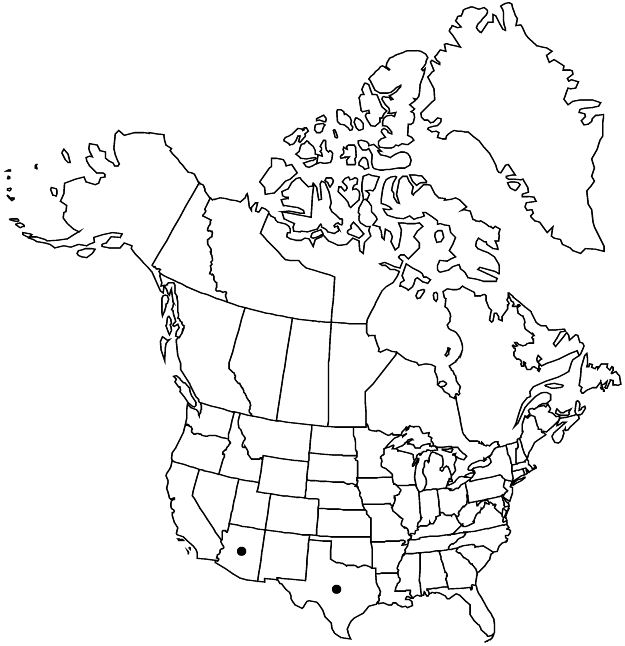Abutilon abutiloides
Annuaire Conserv. Jard. Bot. Genève 6: 22. 1902.
Subshrubs, to 1.5 m. Stems erect, roughly stellate-pubescent, without glandular hairs. Leaves: stipules subulate, 6–8 mm; petiole usually shorter than blade; blade slightly discolorous, ovate, 2–10 cm, longer than wide, base truncate to cordate, margins obscurely to prominently crenate-serrate, apex usually acuminate, surfaces roughly pubescent. Inflorescences solitary flowers or racemose panicles. Flowers: calyx 9–12 mm, basally truncate, lobes basally overlapping, erect in fruit, acuminate, to 8 mm wide; corolla rotate, orange-yellow throughout, petals 10–12 mm; staminal column pubescent; style 8–10-branched. Schizocarps ± ovoid, 9–14 × 10–16 mm; mericarps: apex acuminate, surface uniformly stellate-pubescent and with simple hairs on abaxial margins. Seeds 3 per mericarp, 3 mm, reticulately scabridulous. 2n = 28.
Phenology: Flowering year-round.
Habitat: Open, arid habitats
Elevation: 0–1000 m
Distribution

Ariz., Tex., Mexico, West Indies (Bahamas, Cuba, Hispaniola, Jamaica).
Discussion
Abutilon abutiloides has been confused with A. californicum Bentham and A. berlandieri; the three species are distinct (P. A. Fryxell 1988). It is found in extreme southern Texas and more commonly in west-central and southeastern Arizona.
Selected References
None.